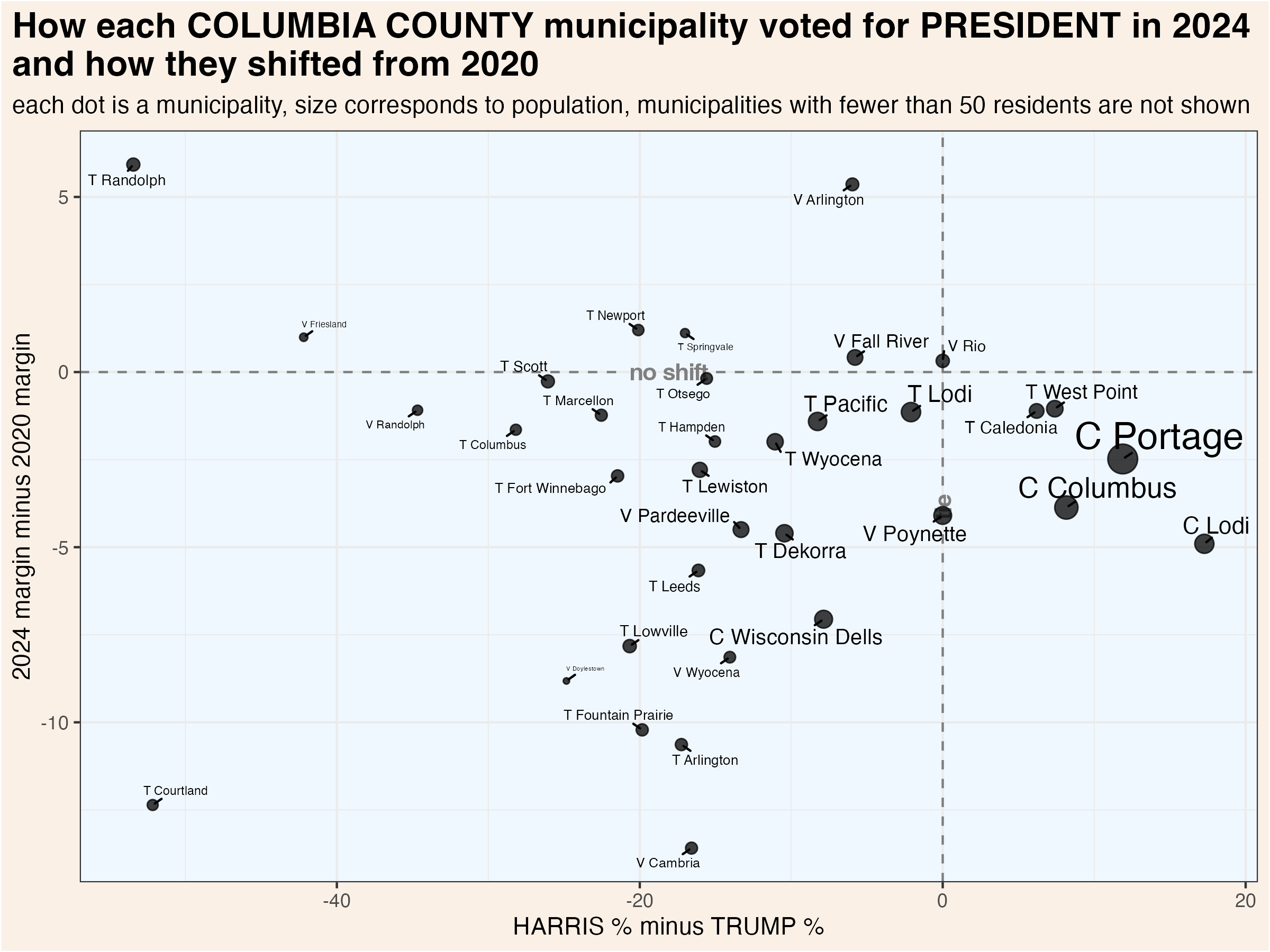
13 Columbia
Columbia County (pop. 58,000) is located just north of Dane County, and it is officially part of the Madison Metropolitan Statistical Area. While economically and geographically connected, the two counties nonetheless feel quite different culturally and politically. More than a fifth of Dane County residents have an advanced degree, compared to just 8% in Columbia. Politically, Columbia is very competitive. Trump narrowly won the county in all 3 races, but Tony Evers also carried the county in both his campaigns for governor. In 2022, the county closely matched the overall state result, by giving Democrat Tony Evers a 4-point victory in the race for governor and Republican Ron Johnson a nearly 2-point victory in the US Senate race.
13.1 Demographics

13.2 County Election Results

Click each column name to sort its values.
13.3 Municipality Election Results
Reflecting the overall competitive nature of the county, most of the municipalities in Columbia have voted for Democrats in some years and Republicans in others. The most reliably Democratic communities include the cities of Lodi and Portage and the villages of Rio and Poynette. The most Republican places include the villages of Randolph and Firesland and the towns of Courtland and Randolph.
This map shows the location of each municipality in the county, as it existed in 2022.

These dot plots show the most recent election results in each municipality.



To more clearly illustrate recent changes in municipality voting trends, these scatterplots compare the most recent vote for president and senator with the shift from that office’s previous election.


These maps show show every election result since 2000 in each municipality.



Click each column name to sort its values.
13.4 Supreme Court Election Results
Wisconsin’s Supreme Court has 7 justices, each of whom are elected to 10 year terms in statewide elections held in April. State law prohibits more than one Supreme Court election from being held in a single year. If a seat becomes vacant, the governor appoints a replacement who serves until the next year in which no court election is already scheduled. If more than two candidates achieve ballot access, a nonpartisan, top-two primary is held in February.
Court elections are formally nonpartisan, but candidates are usually supported by either liberals or conservatives. In recent years, it has become common for the Democratic and Republican parties to endorse and actively campaign on behalf of favored judicial candidates. The liberal and conservative labels indicated in the following graphs and tables are based on widely recognized tendencies, not any formal affiliation.
13.4.1 County Election Results
This graphic compares how presidential, gubernatorial, and court elections have trended over the past quarter century. Click the “Table” tab to see detailed results for the Supreme Court races.

13.4.2 Municipality Election Results
The following table shows the results of each Supreme Court election by municipality. The graphic visualizes the shifts over the past three court elections.
